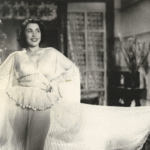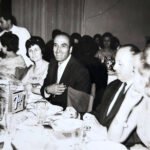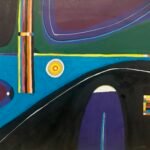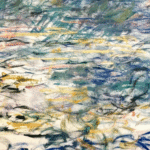Spotlight Q and A about Jean Khalifé, courtesy of the Jean Khalife Estate (489 Words 3 min. Read)
1. Jean Khalife He was one of the pioneers of abstract art in Lebanon. How was this form of art received among his peers in the 1950’s and 1960’s when this was not a common trend?
During the 1950s and 1960s, every early exhibition of Jean Khalifé sharply divided the public — between those who admired his avant-garde vision for abstraction and those resistant to artistic evolution. Each event he held sparked vibrant debates among critics and within Lebanon’s art circles.
2. Can you tell us a story about Jean Khalife that has never been told, a story that highlights who he was as a person?
Jean Khalifé was far more than an artist; He was a cultural visionary. He worked tirelessly to establish a national art museum, but when the project’s involved authorities decided to dedicate it to political figures, he with Drew — remaining true to his Belief that art should serve Lebanon, not politics.
Moreover, he affiliated the Lebanese Artists Association for Painters and Sculptors (LAAPS) with UNESCO and championed the rights of art teachers at the Lebanese University — rights that were eventually granted after his passing.
In 1962–63, while Jean and his wife Odette were living in Paris, they applied for a US visa. The application was denied due to a missing document, and he abandoned the idea — perhaps a lost opportunity that might have changed the course of his life.
3. In many of his works, we observe what seems to be an almost repetitive human figure in his portrait works. Is this a person in particular?
His wife, Odette, may have been the silent force behind his success — she set aside her own promising career to fully support his artistic journey with unwavering dedication.
4. Any plans for an archive or a personal preservation of the works of Jean Khalife For people to visit and appreciate?
The archiving and digitization of Jean Khalifé’s extensive artistic journey are currently in progress — a meticulous process given the richness of his legacy. Visits to view parts of the collection are possible by appointment.
5. What is the connection of Jean Khalife With the Surock Museum and any other museum in the world?
During the 7th Salon d’Automne at the Sursock Museum, Jean Khalifé urged artists to boycott the event, arguing that it functioned merely as a commercial gallery rather than a true museum exhibition. His movement succeeded, leading to the formation of an official museum committee — and he was later invited to serve on the jury for the 8th Salon d’Automne.
In 1971, he was selected to inaugurate the Ashmolean Museum’s department for Eastern Art at Oxford University. He completed 30 paintings in the basement of the Lebanese Embassy just days before the opening. One of these works was later gifted to the museum by An-Nahar newspaper.






